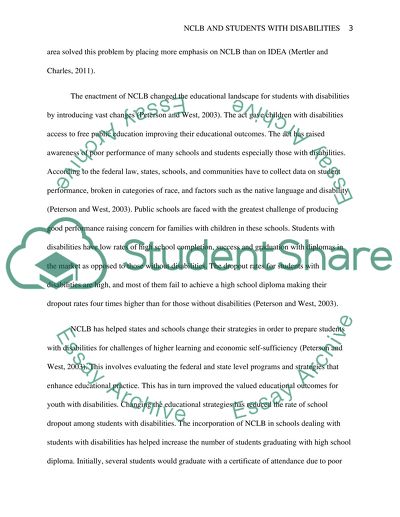Cite this document
(“NCLB and Students with Disabilities Research Paper”, n.d.)
NCLB and Students with Disabilities Research Paper. Retrieved from https://studentshare.org/social-science/1606501-nclb-and-students-with-disabilities
NCLB and Students with Disabilities Research Paper. Retrieved from https://studentshare.org/social-science/1606501-nclb-and-students-with-disabilities
(NCLB and Students With Disabilities Research Paper)
NCLB and Students With Disabilities Research Paper. https://studentshare.org/social-science/1606501-nclb-and-students-with-disabilities.
NCLB and Students With Disabilities Research Paper. https://studentshare.org/social-science/1606501-nclb-and-students-with-disabilities.
“NCLB and Students With Disabilities Research Paper”, n.d. https://studentshare.org/social-science/1606501-nclb-and-students-with-disabilities.


